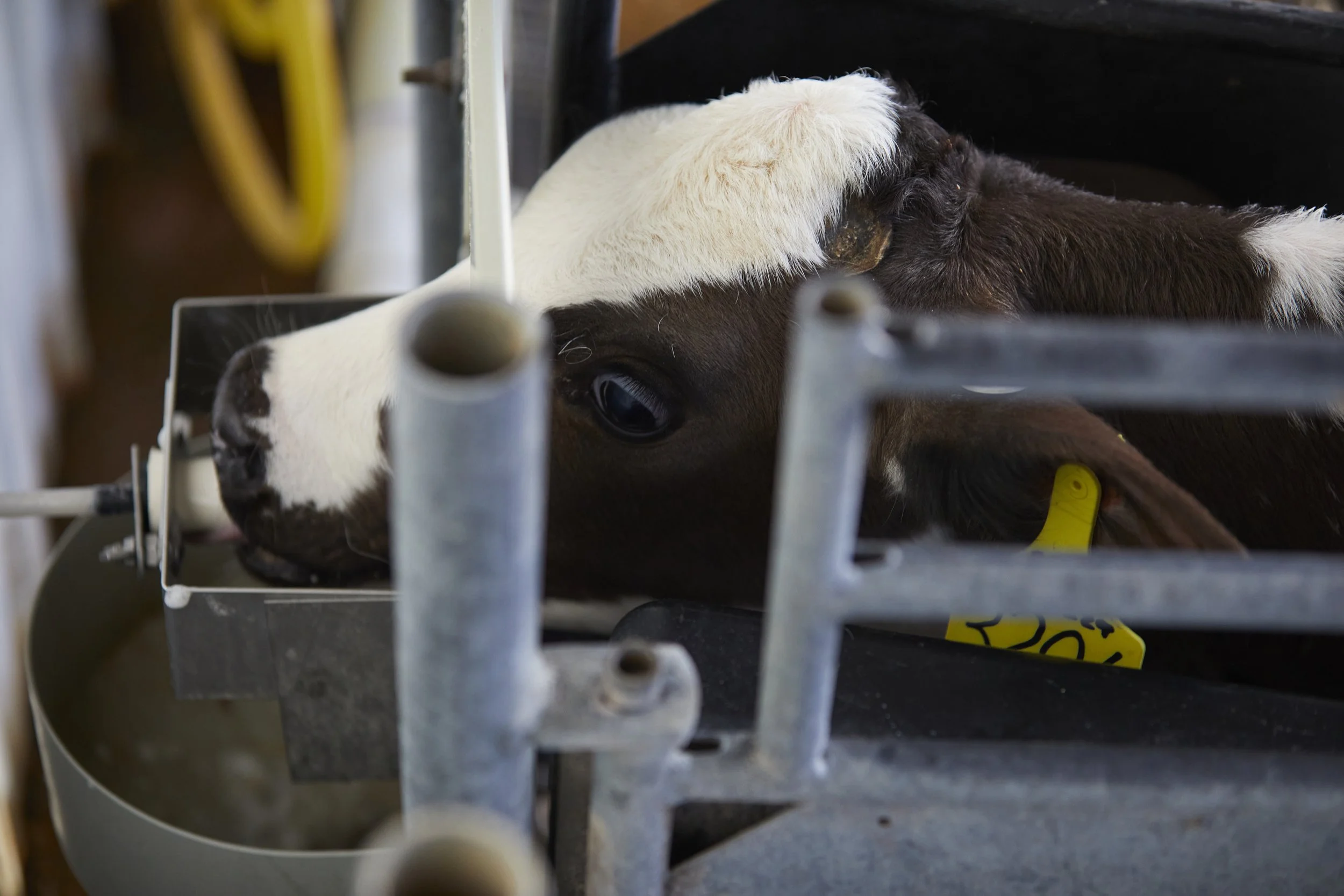It’s Cool to Help Calves Manage Heat Stress
Summer’s heat takes a toll on calves, and it sometimes arrives with little warning. In some parts of the country, Mother Nature’s fickle personality can deliver a sweltering heat wave just days after near-freezing spring temps.
Heat stress in adult dairy cows is shown to have an ambient temperature threshold of just 68°F and above. Because calves have greater surface area relative to their body mass, they can withstand temperatures that are a bit higher. But when the mercury hits about 80°F or above—depending on the humidity level—calves, too, begin to suffer the effects of excessive heat.
When preweaned calves are heat stressed, they become lethargic, dehydrated, and disinterested in eating. The upset in hydration balance also may cause them to scour. And because they need to expend more energy dissipating body heat, weight gain and stature growth are impaired, as is immune function. Heat-stressed calves are less capable of both responding to vaccinations and resisting disease naturally.
“Planning ahead for heat season will help ensure that your calves can remain comfortable, healthy, and growing, through even the hottest days of summer.”
Spring is the time to proactively plan for heat-stress season. Depending on what part of the country you’re in, those preparations may need to start happening as early as February or March. But if you’re been caught off guard, here are 8 things you can do right now to help your calves manage heat stress. Living and working in Texas, I’ve seen many dairies and calf ranches that do an excellent job of protecting their young calves from heat stress, which can be a factor through most of the year here.
Best Proactive Measures
1. Water, water, water
Preventing dehydration is the single most important practice to help calves cope with heat stress. Keeping fresh, clean water in front of calves at all times may require refilling pails up to 3 times a day. And make sure it’s cool – even if it’s clean, calves won’t be eager to drink hot water.
2. Increase feeding rate
Most operations feeding calves individually add a midday feeding. For some, this is an extra milk feeding. For others, it’s a bottle of electrolyte solution.
3. Accelerate air flow
Be prepared to run fans and raise curtains in indoor facilities. Check the function of this equipment in advance so you can engage them the first day you need them. For outdoor hutches, using cinder blocks to raise the back of the hutch off the ground will improve the ventilation inside each unit. Some hutch styles also have roof enclosures that can be opened up in hot weather.
4. Provide shade
Many farms situate hutches facing south in the winter but rotate them to face north in hotter months. This creates better air circulation and more hours of daytime shade. Trees, if available, can provide even more shade, as can temporary shade cloths. Research has shown that calves housed with shade may not eat as much starter grain, but gain better, because the expend less energy keeping their bodies cool.
This calf will benefit from the shade their hutch provides.
5. Change bedding
Straw holds the most heat and should not be used during hot weather. Even sand retains a lot of heat, especially when it gets wet. Wood chips or shavings are the preferred bedding type to best abate heat stress.
6. Keep feed fresh
Starter grain spoils more quickly in hot weather. It is best to offer smaller amounts of fresh feed more frequently and clean it out daily if possible.
7. Delay weaning
Many farms postpone weaning by a week or more in periods of extreme heat. Calves approaching weaning age often are not consuming starter grain as readily as they should in hot weather. Prolonging milk feeding a bit longer also may help them better endure the stress of weaning.
8. Offer prenatal care
Recent research has shown that you can help calves handle the heat even before they are born. Keeping close-up cows cool with fans, shade and misters has been shown to improve the quality of their colostrum, and therefore set their offspring up for a healthier start to life.
Planning ahead for heat season will help ensure that your calves can remain comfortable, healthy, and growing, through even the hottest days of summer.





When Nick Zubke started his job in maintenance at Strauss Feeds in 2013, it was a homecoming of sorts. “I’m from Watertown and live in the house where I grew up, which is about 2 miles from the Strauss plant,” he shared. “The plant has been a part of our ‘neighborhood’ for my entire life.”